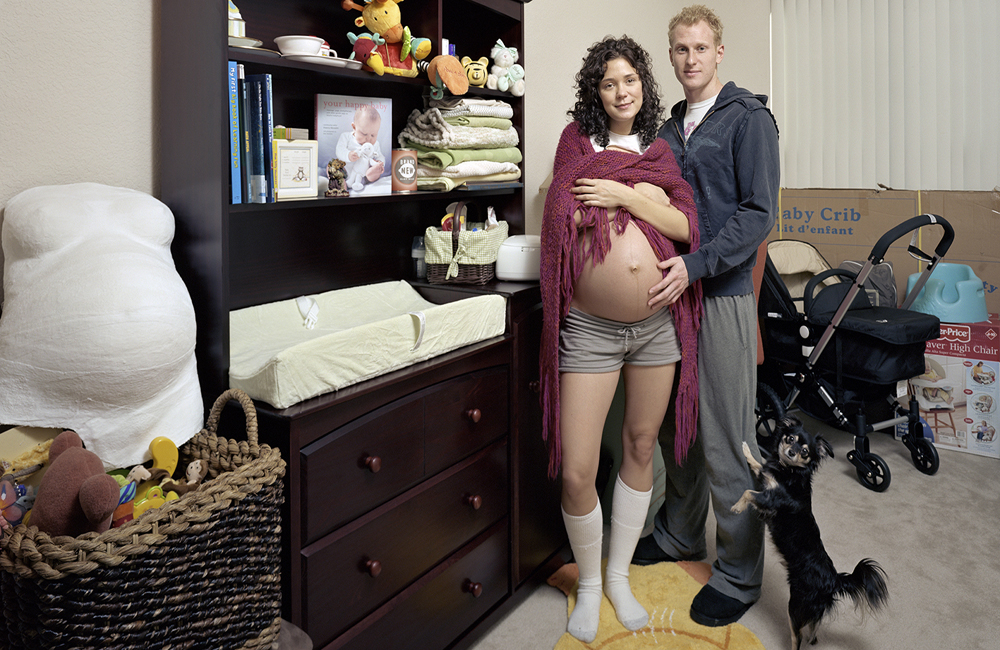Snaps of carefully lit pregnant bellies and picture-perfect nurseries abound on Instagram and Facebook—but how much do they really reflect the huge, messy life transition that’s to come for parents-to-be? Similarly, why is it we rarely see social-media pics of empty adolescent bedrooms that bookend parenthood in the empty-nest stage?
These are just some of the questions raised in Calgary photographer Dona Schwartz’s new book On the Nest, which frames on expectant and empty-nest parents posing in their children’s rooms. With a related exhibition opening January 23 at Stephen Bulger Gallery in Toronto, Schwartz tells us more about the inspiration for the project, the focus on moms in her past work, and the ways she managed to continue making art as a parent herself.
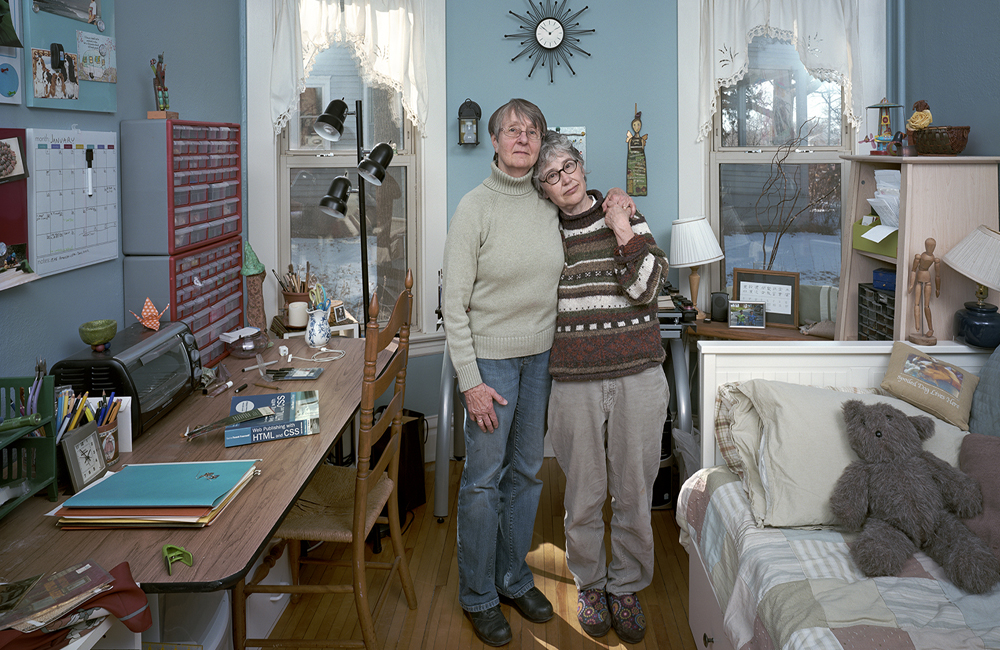 Chris & Susan, 7 Months from Dona Schwartz’s On the Nest
Chris & Susan, 7 Months from Dona Schwartz’s On the Nest
Q: How did your series On the Nest, showing soon in Toronto and recently released in book form, come to be?
A: I was working on a different project—the project that resulted in my previous book called In the Kitchen. That project was about my family and the situation that my partner and I blended families. He has three children I have three children. We moved into a house together and created this new family unit, and so the project was investigating the nature of family. Both of us were divorced, and it raised questions for me about what constitutes family—if I had created this broken family, what is family really all about?
So I was working on this project and photographing the interactions among our kids in our kitchen. The project was really concentrated on teenagers—not just our teenagers, but teenagers and their interactions, teenage culture, how it is that teenagers become adults. And I was very fed up with them! Ha!
As you can imagine, blending families with a bunch of teenagers is not a picnic. So our house was chaotic a lot of the time, and there was a lot of emotion and energy. We also had two dogs and they added another layer of sound to what was going on.
So there was this one day that I was just so fed up with them, and I was really sort of tired of work that I was seeing about teenagers and the transition in teenagers’ lives, because it seemed to me that a lot of other people were also looking at teenage life and culture.
And I thought to myself, “Adults have transitions in their lives too, and someone should focus on that idea. Adults’ lives are also important.” And because I was in this irritated state, I thought the transition to an empty nest could be the best possible adult transition to focus on.
So I thought it would be an interesting idea to look at these transitional moments that adults experience. We really don’t acknowledge that actively, and certainly not in photographic work—to look at the transition to parenthood and how one makes that move from one identity to the next. And then, at the other end of that parenting continuum, how one makes the move from being on task full-time every day to being a parent, but not in the same way—how does one makes that transition to an empty nest?
So that’s how the project came into being—through frustration.
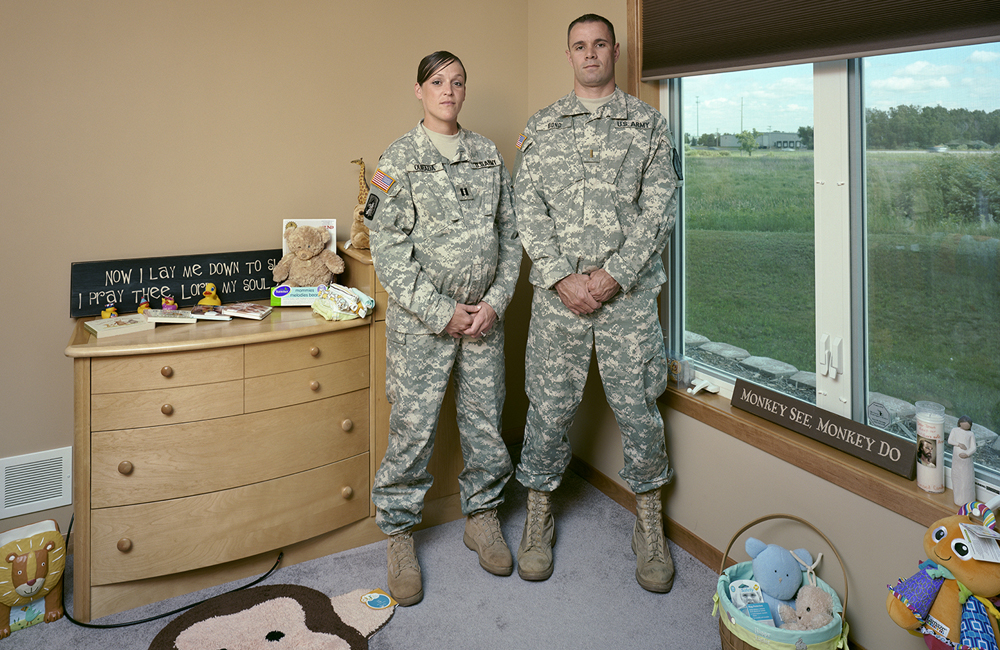 Andrea & Brad, 16 Days from Dona Schwartz’s On the Nest
Andrea & Brad, 16 Days from Dona Schwartz’s On the Nest
Q: So you were quite clear on why you wanted to undertake this project. What did you learn from actually doing the project, though?
A: I learned a lot of different things…and they go in different directions.
To me, one of the most important, in the work, is the kind of cultural inventory that it offers.
You look at the expecting parents and the rooms that they have constructed for their kids and it gives you a sense of what we think the act of bringing a child into the world requires. I started looking for what was similar in different rooms: Were there books that people had purchased? Were there pieces of equipment that people had? A lot of the nurseries were really sort of display spaces, and not for the public. It’s like a private display space in a way, a little bit of a sacred place, because you are really engaging in this amazing act of bringing a new human being into the world, and there are lots of things in those rooms that taught me about how people make that transition and what kinds of emotions and ideals they bring to that threshold, to that moment of change.
At the other end, with the empty nesters, the rooms are almost kind of like archeological sites and you start going through layer upon layer of years of family history and nurturance and growth. In one room there could be things that are from early childhood all the way up to young adulthood. It’s kind of an amazing site, an excavation site, in a way, to see all these things that went into the process of raising a young adult and then what kinds of things get left behind.
One thing that I saw a lot of was abandoned musical instruments. That’s kind of sad, but a lot of those band instruments just didn’t make it beyond the teenage years. So there were those things, the sort of material cultural lessons to be learned.
But also it made me realize how brave we are when we decide to have a baby. And we don’t even know it! It’s like we have no clue what we’re about to do, so it’s such an innocent moment—but it’s also very filled with love and hope and also really brave.
By comparison, when you become an empty nester, I think in some way it’s a little bewildering. Now I am an empty nester, but when I started on the project, I wasn’t and I thought it was going to be super-fabulous. Yet you feel a little wistful—at least I do—and it is a transition it takes a while to get used to. The fact that you can do what you want, and you can make up your own routines that don’t require you to be caring for anyone else except maybe your partner or your spouse—that’s hard to get used to after decades of putting children first.
Figuring out then who you are, on the flipside, is an interesting process. And the rooms are different also in that they’re in different stages of transition. When you’re having a baby, you know that in nine months, you’re a parent. But when you become an empty nester, when you embrace that identity, it’s not as clear, so the rooms are much more different from one to the next. Sometimes they are shrines, they’re not touched at all. And I think the shortest period of time that a room stayed intact was, like, two months before the parents came in and redecorated.
I was talking to some of my students yesterday, and they were talking about how hurt they were when their parents changed their room. That’s another interesting dimension.
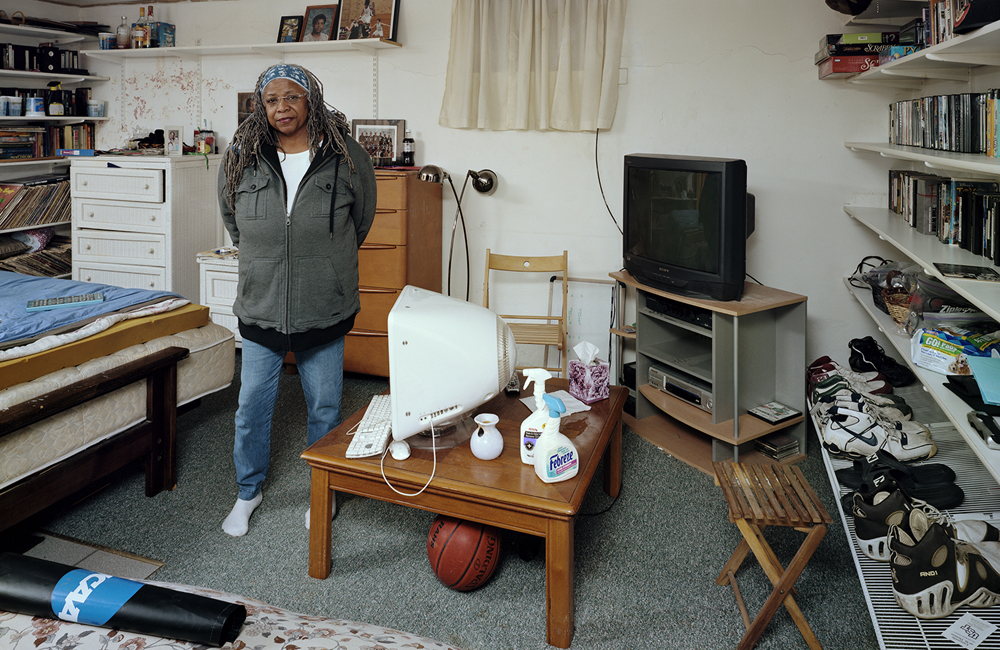 Leola, 3 Months from Dona Schwartz’s On the Nest
Leola, 3 Months from Dona Schwartz’s On the Nest
Q: Your past series of work have also delved into the realm of contemporary parenting—In the Kitchen, as you mentioned, showed many real-life domestic scenes in the titular room, while Soccer Mom looked at families during kids’ soccer matches, and Mothers & Others looked at a wealthy mother and a poorer mother. I am grateful you brought your lens to these experiences, because they seem underdocumented or unappreciated as subjects for contemporary art. How difficult (or not) has it been to get your work taken seriously?
A: I think that of course there are people who are dismissive of work that deals with everyday life, because they might say something like, “I live it, I don’t need to see art about it.”
But I think the truth of the matter is that there is so much change. Change is the norm. Our cultural moment will pass. And I think it’s incredibly important to take stock of where we are, how we live our lives, and what lessons we can draw from it all. If no one stops to take a look at it and take it seriously, then that opportunity has passed.
So people can say, “Yeah, I live that every day, I don’t need to look at it.” And my response is, you don’t look at it and you probably don’t think about it and it’s so fundamental a part of our experience—what goes on in the home, how it is that parents and children interact, how it is that we approach parenting. Because everybody comes out of a family, and that is the crucible of our values and our behaviours and our expectations and our assumptions. And if we don’t really think about it, then we lose that opportunity to learn about who we are.
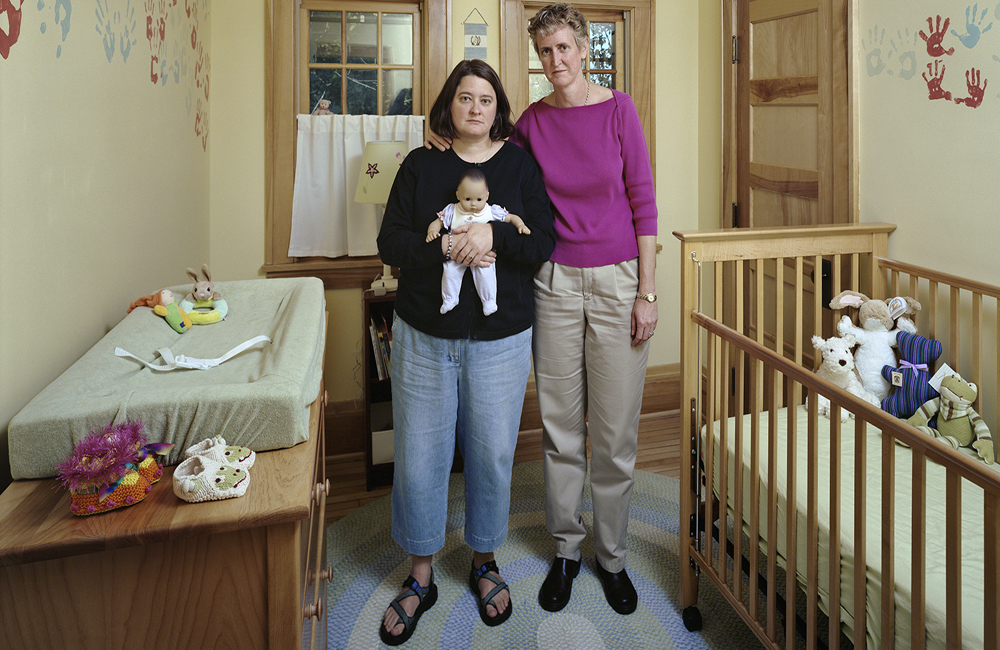 Desiree & Karen, 68 Days from Dona Schwartz’s On the Nest
Desiree & Karen, 68 Days from Dona Schwartz’s On the Nest
Q: You are a parent and step-parent. What changed for you as an artist after you became a parent?
A: When you’re a parent you’ve got a lot of responsibilities. Ha! And so I make work that comes out of my experience.
You know one of the reasons for the Mothers & Others project was that there’s a lot of photographic work that explores the exotic other, and I think we have the best insights on the experiences that we have every day—if we stop to think about and assess and critically explore what it is that makes up our day-to-day experiences.
For instance, I’ve taught photography for a long time, and students often want to make photographs of homeless people. And I think the best people to make photographs of homeless people are homeless people. It’s hard for someone outside of a life or experience to make an authentic statement about it. It can be done, it definitely can be done, but I think it’s important for people who are in a situation to have their own voices, and to use them.
So then, what is it like to be a parent? The Mothers & Others project was a simple idea of looking at what does the work of mother entail? What does a mother do on a day-to-day basis? What if I look at different women from different social environments? And of course, I’m looking at their mothering activities through the lens of my own.
So a comparison just happened to emerge [in Mothers & Others] between these two women who had the same name, which was very coincidental. Each of them had very different means to bring to bear on the work that they did. But they both worked so hard and were fully engaged, fully devoted, fully involved in the work called mothering.
That was so interesting to me. When you are a parent you are kind of busy with parenting, and it’s not as like you can go off to some distant place and do a long-term project because you’ve got responsibilities. So it just seemed natural to me to look at what are these responsibilities? What does it mean and what does everyday life look like? I think it’s important to take and use one’s voice to authentically speak to experience.
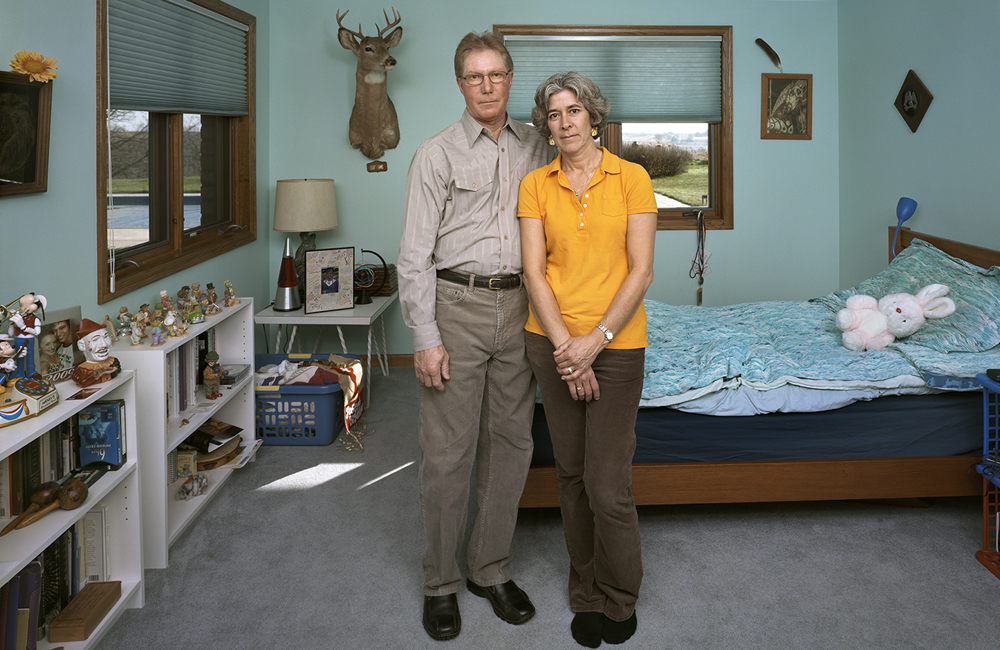 Christina & Mark, 14 Months from Dona Schwartz’s On the Nest
Christina & Mark, 14 Months from Dona Schwartz’s On the Nest
Q: How did you manage to continue making art as a parent?
A: I think you just do it. There’s so many things. It’s kind of like becoming a parent when you don’t realize how much work it’s going to be. You just do it. You just do all this work and you look back and say “I don’t know how I did that.” But you just step up and do it. So I think really the answer is you do what you can to make it possible to pursue what you need to pursue.
And I mean, I didn’t photograph nonstop throughout my child-raising years, but there were points in time where I was just [like] “I have to do this. I can’t stop being a photographer because that’s what I do. That’s who I am.” So you just kind of put it together.
When I shot Mothers & Others I was spending days with other mothers while my kids were in school, right?
And the Soccer Mom project is a project my daughter is still angry with me about. She says, “Mom, you were supposed to be watching me.” We had this conversation a few weeks ago and I thought she was over it, because she’s 22. But she still holds a bit of a grudge. I would say to her at the soccer field, “I’m watching you, but from a distance.”
But it seems to me like soccer was not a major interest of mine. And I think youth sports is really important—actually it was my ex-husband who signed her up and I ended up with the schedule where I had to bring her—but I thought, these parents are all spending this time and do they all really enjoy it? What is going on here? What is it that we think we’re doing as parents when we surrender this time and schlep our kids all over the city? And if we’ve got two kids in different leagues in different places, oh my god. What is this all about? And so, you know, I was there and I just felt like, “I’m bringing my camera, I’m just gonna do it.”
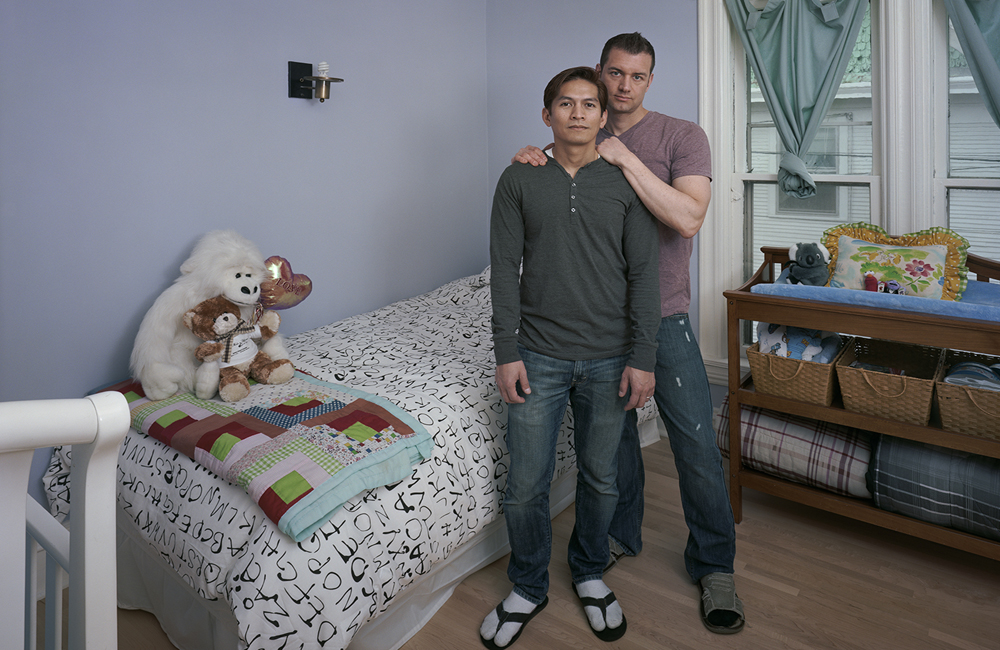 Bobby & Kevin, Waiting to Adopt from Dona Schwartz’s On the Nest
Bobby & Kevin, Waiting to Adopt from Dona Schwartz’s On the Nest
Q: What’s next for you?
A: Well, I as I said, the work that I do really comes out of experience. And in the summer of 2014, I sold the house I thought I would never sell. My partner and I moved to Canada. We left our kids behind in the US, mostly in Minneapolis, and we moved. Which is something that not a small number of empty nesters do.
I ran into a woman I photographed, and she said to me, “I’m so glad you photographed my daughter’s room, because I sold the house after that and that’s all that’s left.” That, to me, was super poignant. And then I did the same thing. And I didn’t expect to do it at all, but I did.
So here we are now in Canada, and it dawned on me at a certain point that I’m an immigrant—another thing I never thought I would say.
So I’m looking at what it is that constitutes home for people—how it is that we come to feel at home, what it is that we need in terms of physical space to call a place home, what it is that we need in terms of relationships to call a place home. Again, it’s a transition. What is it that makes a place change from being strange to being home? So that’s what I plan to be looking at as soon as I have the time.
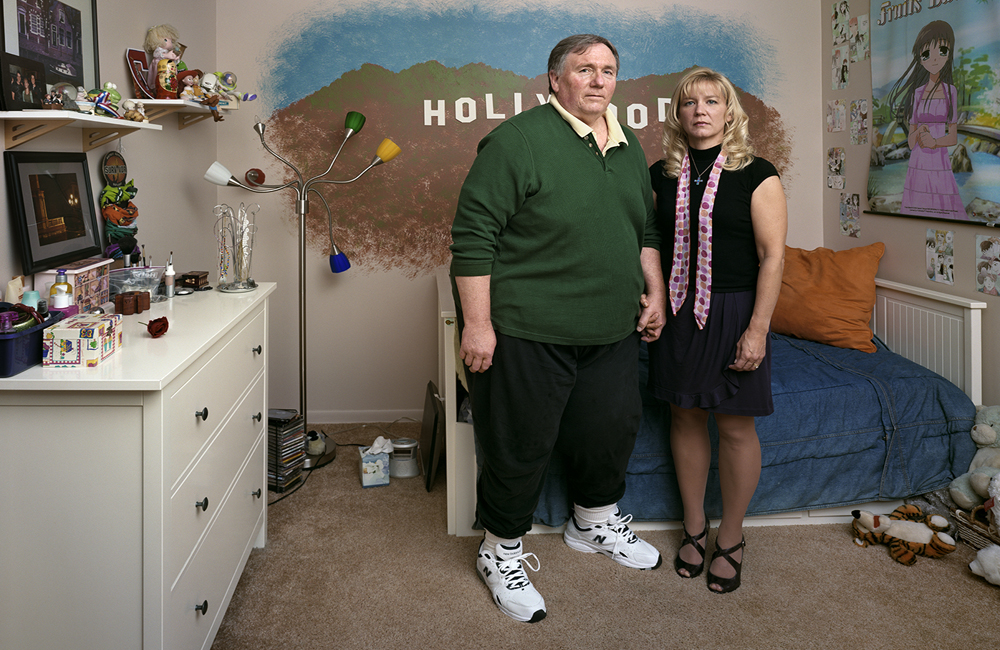 Pam & Bill, 2 Months from Dona Schwartz’s On the Nest
Pam & Bill, 2 Months from Dona Schwartz’s On the Nest
Q: What else would you like people to know about the new book On the Nest and the work that led up to it?
A: Well, I think that the experience of parenting and of parenthood is so fundamental. Not everyone becomes a parent, but everyone is a parent’s child. To have a better understanding of the emotions going into that experience, and the perspectives and reflections on having had that experience, are so fully human. I think that’s worth examining, worth reflecting upon.
“Dona Schwartz: On the Nest” runs January 23 to February 27 at Stephen Bulger Gallery in Toronto. Her related book On the Nest was released in December by Kehrer Verlag.
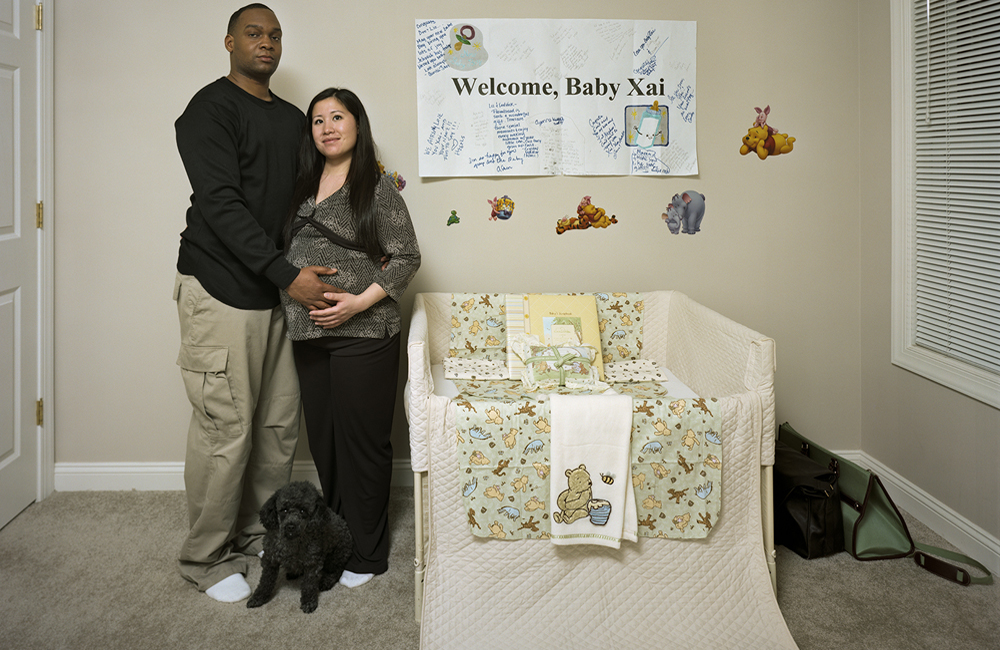 Liz & Deedrick, 14 Days from from Dona Schwartz’s On the Nest
Liz & Deedrick, 14 Days from from Dona Schwartz’s On the Nest
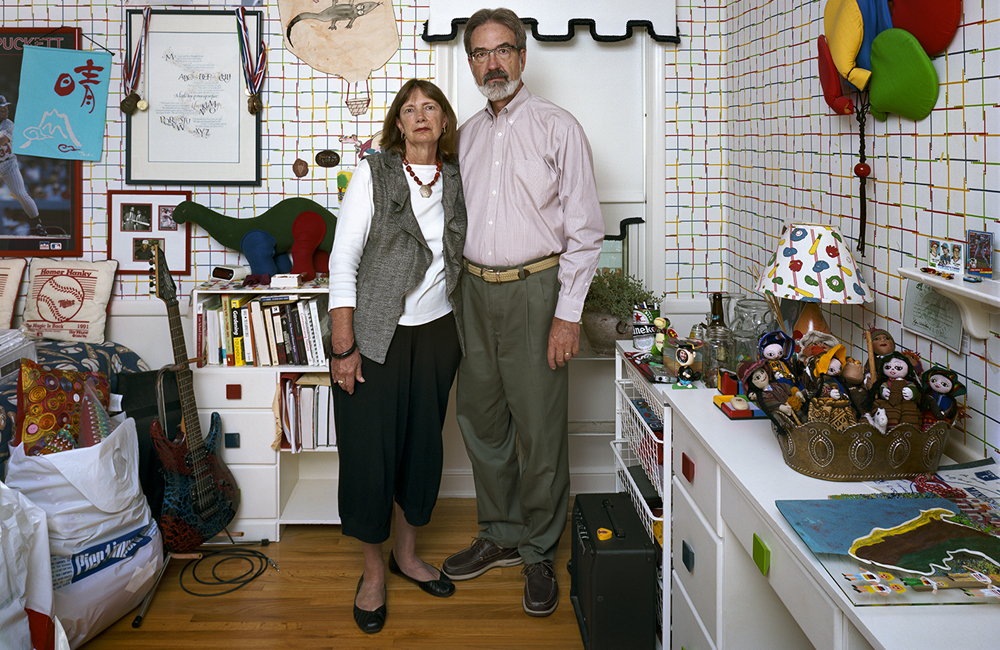 Lollie & Alan, 3 Months from from Dona Schwartz’s On the Nest
Lollie & Alan, 3 Months from from Dona Schwartz’s On the Nest
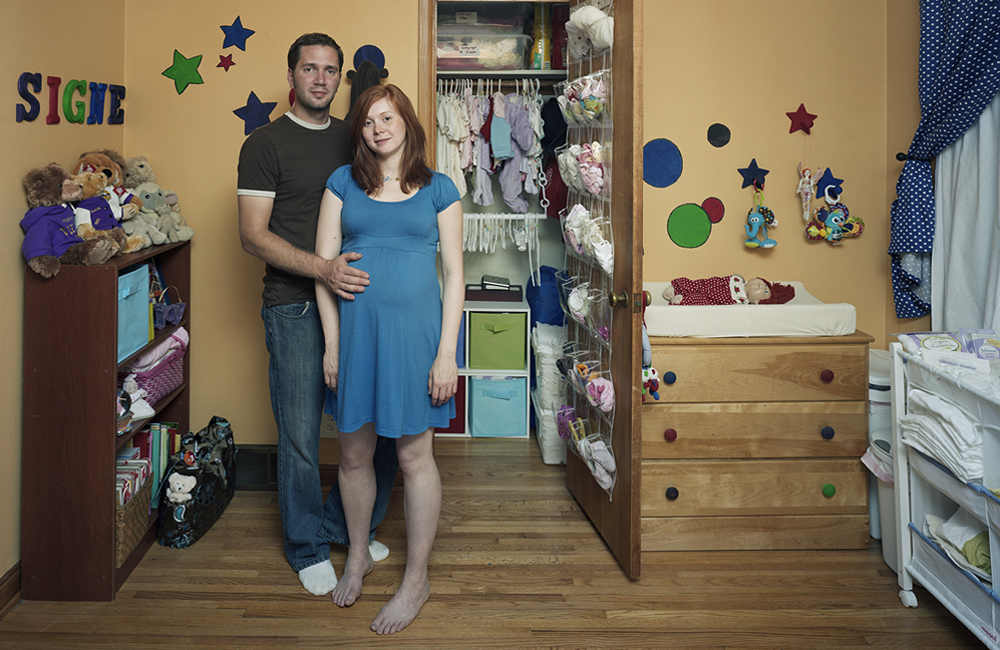 Nicole & Stephen, 14 Days from from Dona Schwartz’s On the Nest
Nicole & Stephen, 14 Days from from Dona Schwartz’s On the Nest

